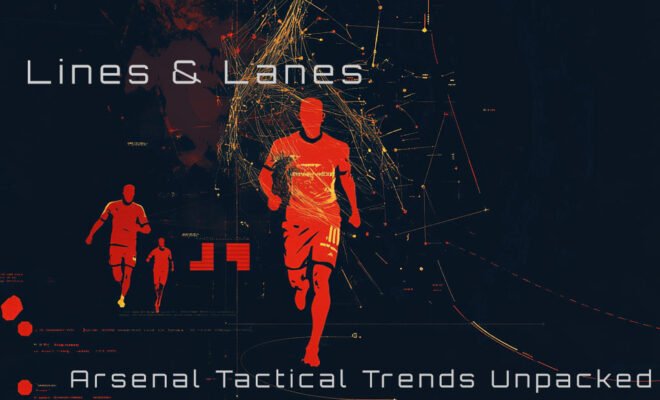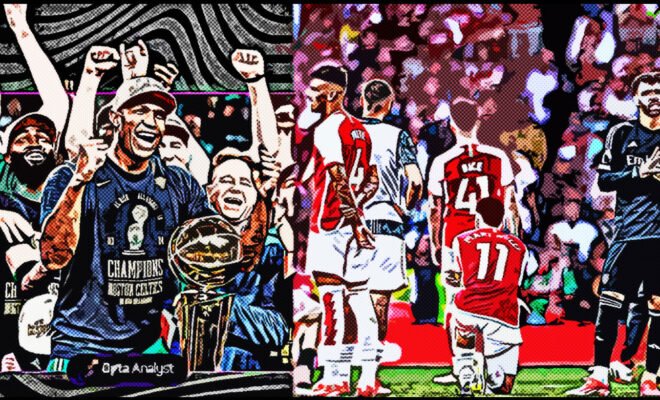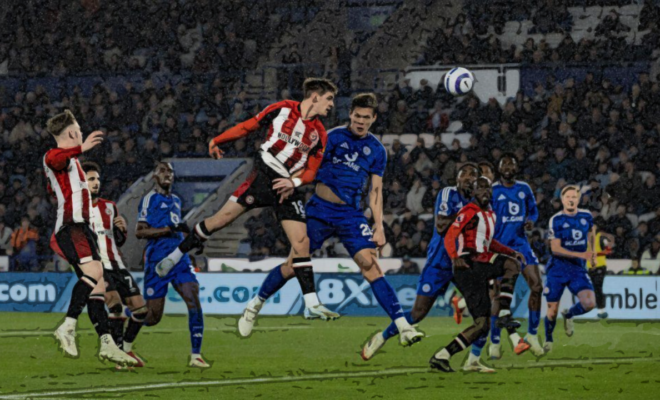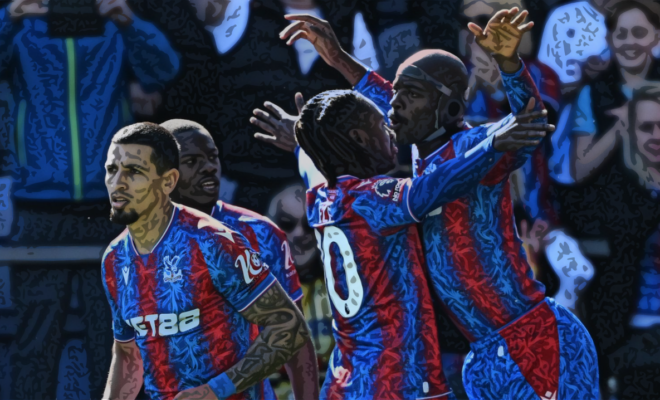Arsenal after five games: what the data says about their season so far

The first five weeks of Arsenal’s league campaign have produced a blend of stability and evolution. A narrow opening win at Old Trafford, a dominant home display against Leeds, a fine-margin defeat at Anfield, a controlled 3–0 victory over Nottingham Forest, and a balanced 1–1 draw with Manchester City have created a meaningful dataset. The numbers and tactical patterns now show not just what Arsenal are in isolated matches, but how their identity is consolidating across different contexts.
This cumulative view highlights a team that continues to lean on reliable structures — right-sided progression, defensive stability, and set-piece value — while gradually layering in new attacking options. There are emerging strengths to build on and areas still under construction, particularly central chance creation. The story after five weeks is less about reinventing the model and more about sharpening it for bigger stages.
Trends That Continued
Right-side progression as the backbone
Weeks 1 through 5 confirm that Arsenal’s attacking framework still tilts toward the right. The Ødegaard–Saka–White triangle defined early phases, with Timber stepping into White’s role when unavailable. Even when Saka missed time and Madueke filled in, the channel remained the main progression lane. Week 5 against City reinforced this bias: the passing networks and half-space maps show Arsenal once again favoring the right to enter the final third. It is no longer player-dependent but a structural constant.
Control through possession and territory
Whether in high-control wins (Leeds, Forest), a cagey contest (Liverpool), or a balanced heavyweight meeting (City), Arsenal have managed matches by controlling possession phases and limiting transitions. Weeks 1 and 2 showed how Arsenal could tilt the pitch to suppress weaker opposition. Week 3 at Anfield illustrated their ability to prevent Liverpool’s attack from running wild, even if chance quality was lacking. Forest and City added further examples: steady possession numbers, reduced opponent entries, and game states dictated by Arsenal’s shape.
Defensive floor remains solid
The Gabriel–Saliba base was steady in Weeks 1 and 2. When Saliba went down at Anfield, Mosquera stepped in without the unit collapsing. Forest produced minimal threat, and City were held to ~0.7 xG in Week 5, their lowest in a league game this season. The consistency of expected goals against across five matches (rarely exceeding 1.0 xG) suggests Arsenal’s defensive platform is systemic rather than reliant on individual form.
Set-piece effectiveness as a repeatable edge
Calafiori’s header at Old Trafford, Timber’s brace versus Leeds, and multiple key moments against Forest underline Arsenal’s ongoing efficiency on set plays. Even in tighter contests, delivery volume and varied routines have been present. The trend from last season — where Arsenal led Europe in set-piece goals — remains intact through five weeks.
New and Emerging Trends
Balanced buildup through the left
Early weeks tilted heavily right, but since Leeds the left has been progressively more involved. Calafiori has stepped forward more often, Rice has supported buildup by drifting left, and Eze’s introduction has added dribbling and combination play. Against Forest, Eze assisted from the left and created variety. Against City, progressive passing and carries again showed the left contributing meaningfully. What began as a supplementary lane now looks like a genuine secondary progression route.
Madueke’s vertical interpretation of the right
With Saka unavailable in Weeks 3 and 4, Madueke altered the profile of the right. His higher dribble volume and box entries created a different rhythm, less about combination and more about direct confrontation. Against Liverpool, he produced Arsenal’s best chance. Against Forest, he logged nine deep completions and led the side in passing value-added. By Week 5, with Saka back, Arsenal have options: the established creative anchor or a dribbling-heavy alternative.
Midfield pivot adding attacking value
Rice began the season primarily as a stabilizer but added creativity against Leeds and Liverpool. Zubimendi, meanwhile, grew from anchoring to scoring — his brace versus Forest marked a new layer. Against City, both players again combined to control tempo while offering progressive distribution. Across five weeks, the pivot has shifted from purely protective to also carrying attacking weight.
Gyökeres’ growing integration
Isolated in Week 1, Gyökeres gradually grew into the system. Week 2 provided a breakthrough with a brace. Forest offered his most rounded display: multiple shots, better timing of runs, and a goal. Against City, he remained active in link-up but was often crowded out in the box. The arc is clear — service and striker timing are aligning, but output against elite defenses is the next hurdle.
Depth players shaping outcomes
Five weeks in, rotation and squad depth are visible factors. Mosquera’s early test was passed, Madueke has altered attacking dynamics, and Eze has already recorded his first assist. Youth minutes for Dowman and Nwaneri tightened central networks and added energy. Depth has moved from contingency to real influence.
Concerning Trends
Central chance creation bottleneck
Zone 14 and central combinations have remained a weakness. Against United, Arsenal relied on wide entries. Leeds produced volume but again through the flanks. Liverpool restricted central play almost entirely. Forest provided higher-quality chances but still via wide service or second-phase runs. Against City, Arsenal’s central entries were low compared to final-third possession. Without sharper central progression, elite teams can continue to crowd Arsenal wide.
Creative reliance when leaders are absent
Week 3 without Saka and Ødegaard highlighted the gap. Week 4 saw Ødegaard depart injured early, again shifting the burden. Madueke, Eze, and Zubimendi have contributed, but Arsenal’s best attacking clarity still flows through their established leaders. Until newer signings consistently provide end product in big games, reliance remains a concern.
Finishing variance and margins
Five goals from ~2.9 xG against Leeds inflated output. At Anfield and against City, Arsenal created limited chances relative to possession. If finishing regresses and volume does not rise, especially in tight matches, results could again hinge on single moments. That risk has already materialized once, with Szoboszlai’s free kick at Anfield.
Wing duels in high-level matches
United and Liverpool exposed Arsenal’s struggles in wide ground duels. City again forced heavy wing battles, where Arsenal’s success rate was mixed. In matches decided by fine margins, losing wide contests limits entry points and shot creation.
Reinforced Positives
Consistently low xGA across contexts
From Old Trafford to Anfield to the Emirates, Arsenal have rarely conceded high-quality volume. United were forced wide, Leeds managed 0.1 xG, Liverpool created only 0.3 from open play, Forest were limited to scraps, and City produced less than 1.0 despite territory. This defensive ceiling is Arsenal’s strongest reinforcement to date.
Pressing variety remains effective
Arsenal’s pressing has been adapted by context: phased against United, high and aggressive versus Leeds, balanced containment at Anfield, assertive turnovers against Forest, and situational against City. Across five weeks, pressing has consistently produced recoveries or suppressed opponent buildup.
Full-back asymmetry as a structural feature
White/Timber pushing forward on the right while Calafiori balances on the left has remained a principle. Even with rotation, the asymmetry provides balance and repeatable lanes for progression.
New signings expanding the ceiling
Madueke, Eze, Gyökeres, Zubimendi, and Calafiori have each provided tangible impact. They are not theoretical depth but active contributors. Their influence diversifies Arsenal’s attacking routes and reduces the load on established leaders.
Conclusion
Five weeks of data now reveal Arsenal as a side built on defensive stability, territorial control, and repeatable right-sided progression, while gradually layering in more balanced buildup and expanded roles for new arrivals. The attack is more varied than last season, but central chance creation remains the missing piece, especially in matches where margins are tight.
The trajectory is clear: Arsenal are not reinventing themselves but adding breadth to an already solid foundation. The defensive ceiling looks reliable, the squad has more functional depth, and attacking options are growing. The next step is sharper central incision and consistent striker integration against elite opposition. If those pieces click, the first five weeks suggest Arsenal are building the platform for another sustained challenge.





